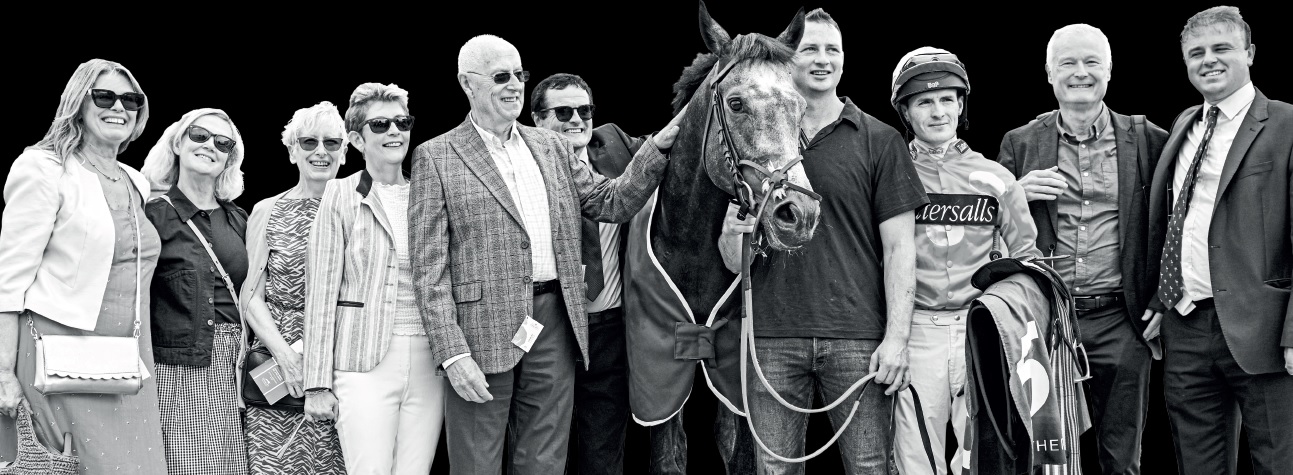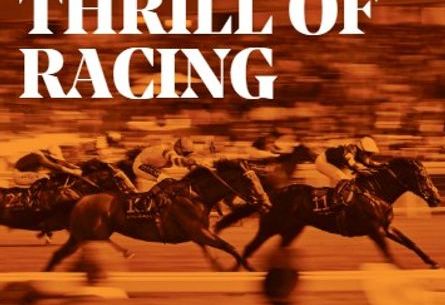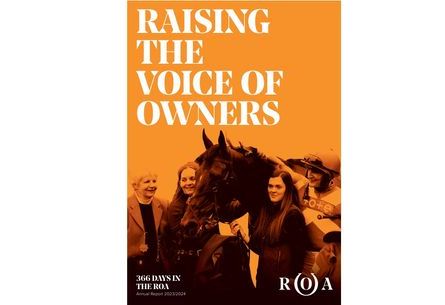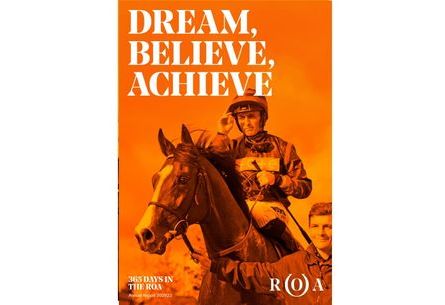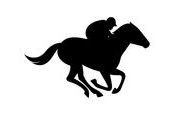About Us
The Racehorse Owners Association (ROA) promotes and protects the interests of racehorse owners in Great Britain. Our vision is to create a world-class membership organisation that provides outstanding benefits for owners and helps bring the passion of racehorse ownership and racing to life.
Our mission is to help shape and secure a bright and sustainable future for the sport. We will achieve this through representing owners at an industry level, whilst producing and delivering exceptional membership benefits that both retains current and attracts new members.
The ROA is funded almost entirely from membership income. Members pay £286 (including VAT) annually and they receive a host of wide-ranging membership benefits, that supports the process of purchasing a racehorse and the ongoing experience of racehorse ownership.
The ROA is a founder member of the The Thoroughbred Group, an organisation which represents owners, trainers, jockeys, breeders and stable staff. The ROA is also represented on a number of other Racing Bodies and Committees.
ROA Board and Governance
Meet the ROA Board
The ROA has a Board of 11 members. Elected Board members are required to stand for re-election every four years. Most Board members are elected through an annual ballot amongst all members of the ROA, and there is an opportunity for the Board to co-opt members to widen the skillset and knowledge of the team.
Every six months individual Board Member’s compliance with the ROA’s Articles of Association is reviewed with respect to meeting attendance and qualifying owners’ criteria. We confirm that at present all current Directors are in full compliance.
To get in touch with any of the ROA Board members, please email [email protected]
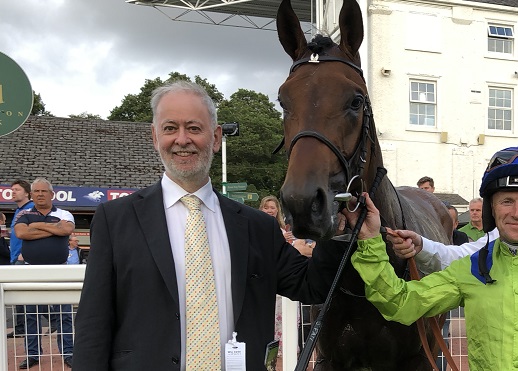
Chair: Dr Jim Walker
Joined Board 2023
Elected Chair 2025
Positions and companies: Chief Economist, Managing Director
Years as owner: 24
Role and responsibilities: ROA Nominations Committee
Meet the Board - Dr Jim Walker
What is the day job?
I am the Chief Economist at Aletheia Capital Ltd, an independent research provider for institutional investors based in Hong Kong.
Why did you get involved in racing politics?
I don’t really consider my Board position as getting involved in ‘racing politics’. All I am concerned about is getting a better deal for British owners. So many other jurisdictions seem to be able to balance the racing programme with a decent return to owners, why can’t we? Anything I can help with to reduce the costs to owners and increasing prize-money to them will have my fullest attention.
How has your background/upbringing influenced your views?
Having spent most of the last 30 years in Hong Kong, I have seen it go from a racing backwater (in 1990 the quality of HK racing was no better than Class 5 or 6 here today) to one of the premier racing jurisdictions in the world. It did so by concentrating on quality (and reducing corruption) and, principally, by rewarding the people that supply the product – owners.
Having a third-placed horse in a Hong Kong Class 5 (the lowest class) would pay training fees for at least three months. That is something that UK owners won’t even be able to comprehend. As an economist, we can’t just keep hoping that people will pile money into the sport without any hope of a positive return. That is the way to kill off the business.
The current situation leads to the inevitable sale of many of our top horses to other jurisdictions. That is what the treatment of owners leads to, and yet still some in the industry don’t understand why it is happening.
How long have you owned horses and how much success have you had?
I returned to live in the UK for a few years in 1998 and bought my first horse – with Linda Perratt – in 1999. I have had horses in the UK ever since, mostly with William Jarvis and Charlie and Mark Johnston. I had horses in Hong Kong with Caspar Fownes, John Moore and David Hall. As for success, not enough! But every owner is greedy for more. By far the best horse I have owned was Subjectivist, winner of the Gold Cup in 2021.
What do you love/hate about racing?
It might be an odd answer but what I really love is the puzzle of figuring out how best to a) buy a horse with potential and b) place one that has shown their form to win a race – that’s the hard part for some of them! I really like taking some money off the bookies as well – not that I have ever triggered any affordability checks!
I hate paying entry fees (not a feature of Hong Kong racing) and not knowing how much racecourses are being paid by the media to sell the rights to my horse to the betting public. How come the middleman in the generation of the product gets to keep all the money from selling someone else’s goods?
What are the immediate priorities for the sport?
Restructuring. Since joining the Board of the ROA I have become painfully aware of just how many fingers are in the racing pie and how many vested interests there are. It all leads to frustrating inertia. The whole racing management structure is broken and needs to be streamlined and re-engineered. If I have to hear “that’s the way it has always been” one more time as an explanation for why we can’t change the rules or change the system for the better, I think I’ll go mad.
What is your favourite day's racing?
Thursday, June 17, 2021, when Subjectivist won the Gold Cup at Royal Ascot.
Which horse would you most like to have owned?
Easy – Desert Orchid, although it would have been Roman Warrior on the Flat.
What is your racing ambition?
To breed a Group winner from Subjectivist.

Vice Chair: Alan Spence
Joined Board: 2017
Elected Vice President: 2022
Positions and companies: Chief Executive, Britannic Travel 1970 - 2006
Years as owner: 46
Roles and responsibilities: ROA Finance Audit and Risk Committee, ROA Jockey Renumeration Working Group
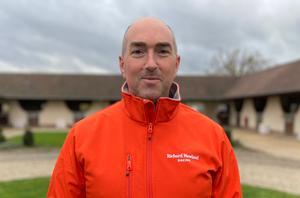
Dan Abraham
Co-Opted: 2025
Position and companies: Racehorse Syndicate Manager to Foxtrot Racing
Years as owner: 18

Stephen Appelbee
Joined Board: 2023
Positions and companies: Non-executive Chairman, Chief Executive and serial entrepreneur in the healthcare industry
Years as owner: 34
Role and responsibilities: ROA HR Committee, ROA Owners Working Group
Meet the Board - Stephen Appelbee
What is the day job?
I am a Business Angel, funding start-ups in the medical and medical device fields. I built up several companies in this area after I started working for myself in 2007, and when I sold them, I decided to invest again, becoming a Business Angel. It allows me to give something back to the industry, whilst also understanding the problems and pressures associated with start-ups. I am able to mentor those involved as well as contribute financially.
Why did you get involved in racing politics?
I have essentially retired, as I am no longer looking for new businesses to invest in. However, I missed being busy and wanted to get involved in something whereby my opinion would be sought and valued. I saw the article in Owner Breeder looking for perspective Board members and I saw it as my chance to give back to racing, which has been good to me. As an owner, I know what a huge investment we make in racing and that it is often not commensurate with the rewards on offer. Members pay their subscriptions in order for us to fight their corner – I hope to encourage us to stand up for ourselves and have a firmer voice.
How has your background/upbringing influenced your views?
I was brought up in Walthamstow, as the youngest of four children. My mother worked at Hackney and Walthamstow dog tracks – settling dividends for the Tote with mental arithmetic - long before computers did the job, so betting and gambling were around me as a child! I was brought up to respect others, treat everyone the same, and believe that I am no better or worse than anyone else – a perspective that has set me in good stead in the business world. I would like to think I am also carrying this into the racing sphere as well.
How long have you owned horses and how much success have you had?
After I relocated back to the UK from Dubai, I went racing for the first time with a work outing. It was that introduction at Newmarket’s July Course that made me fall in love with racing. Within a year I had joined a syndicate, and more rapidly followed! I first became a sole owner in 2000 with The Cottonwool Kid, who won his first race in my colours.
Probably my favourite horse has been Broke Road. He was only small, but he tried so hard and won nine out of his 46 races for me over jumps. On the Flat I have been lucky enough to have shares in the winners of Listed races with Russian Punch and Vintage Brut. But as with all owners, I have also experienced the loss of a horse, and the frustrations of needing to be patient with one.
What do you love/hate about racing?
I like the buzz of being at the races, whether it's Fakenham or Royal Ascot. I've had runners at both and they can equally give a great thrill. Not only is racing a great leveller, it also confirms my outlook that we are all equal on or under the Turf. I don’t necessarily hate anything about racing but do have the usual infuriation about prize-money – which I believe needs to be distributed more evenly – and on the various fees which always seem to hit owners. There is a balance to be struck, which means the owner does not always foot the bill.
What are the immediate priorities for the sport?
The sport must be properly financed. The recent levy problems have highlighted that there is only a finite income and prize-money will not be growing any time soon – yet costs keep going up. Unless you are at the top of the pyramid, owners get a poor return on their investment and it's our job to change that. Racing, and racecourses in particular, need to embrace and welcome syndicates – they are the future of ownership because of the rising costs of owning, and are where most sole owners start their journey.
Which horse would you most like to have owned?
Probably Antonin or Docklands Express; it was another one of those good days on track which lives long in the memory. It was the 1994 Racing Post Chase at Kempton and I got the forecast up!
What is your favourite day's racing?
My wife and I were invited to a corporate outing to Ascot. No one really had any idea about racing, so I showed them around and gave them pointers. I managed to tip the winners of the first five races and a horse that placed in the sixth and never had to buy a drink all day!
What is your racing ambition?
Simply to leave racing in a position better than I found it.
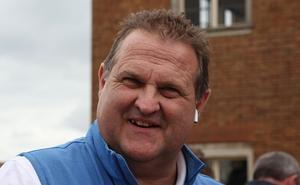
Tom Goff
Joined Board: 2019
Positions and companies: Director – Blandford Bloodstock, Epsom Downs Race Committee
Years as an owner: 19
Roles and responsibilities: Bloodstock Integrity Forum
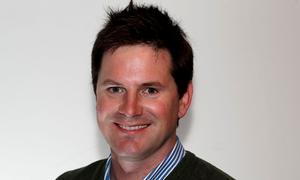
Sam Hoskins
Joined Board: 2025
Position and companies: Racehorse Syndicate Manager to Kennet Valley Syndicates and Hot To Trot Racing
Years as owner: 15
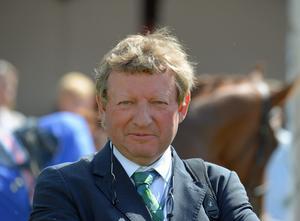
Mark Johnston
Joined Board: 2025
Position and companies: Director of Johnston Racing Ltd
Years as owner: 38
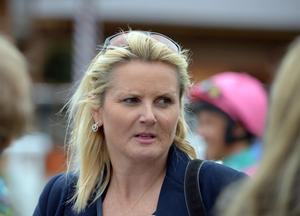
Gay Kelleway
Joined Board: 2020
Positions and companies: Trainer, company director Gay Kelleway Racing, Trainer and jockey
Years as owner: 30+
Role and responsibilities: ROA Owners Working Group

Charlie Parker
Joined Board: 2015
Elected President: 2020 - 2025
Positions and companies: Elected to Board 2015 Owner of Crimbourne Stud Limited and Director of various other leisure and insurance businesses. Chief Executive The Club Company and The Country Club Group.
Years as owner: 25
Roles and responsibilities: ROA representative on the Thoroughbred Group, BHA Board, BHA Audit Committee, BHA Nominations Committee, Gambling Strategy Group, ROA Finance Audit and Risk Committee, ROA HR Committee, ROA Nominations Committee.
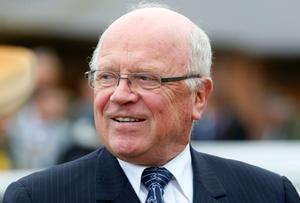
Peter Savill
Joined Board: 2025
Position and companies: Retired Businessman. Previously Chairman BHB 1998-2004, President ROA 1996-1998, Director of HBLB 1998-2002, Director of the Tote 1999-2001, Chairman of Plumpton Racecourse 1998 to date
Years as owner: 48
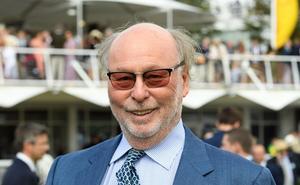
Chris Wright CBE
Joined Board: 2016
Positions and companies: Co-opted to ROA Board 2016. Co-founder and Chairman of Chrysalis Group 1968 to 2011. Previous TBA Board Member.
Years as owner: 35
ROA Articles of Association
Members can access the ROA's Articles of Association by downloading the PDF below:
ROA Team
Meet the ROA Team
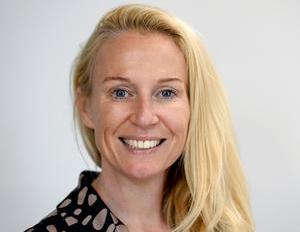
Louise Norman
Chief Executive Officer
Louise joined the ROA as part of the Executive Team in January 2020 after 20 years working for Weatherbys primarily in the VAT Service area before heading up the Racing Bank team as Senior Manager. Prior to this Louise worked for HMRC on the VAT inspection side, gaining an insight into the working world of VAT and Tax. Louise has enjoyed many years working for, and alongside, Racehorse Owners which enables her to understand the importance of Owner engagement with the ability to drive improvements in the overall customer experience.
Favourite horses: Denman and Gatflax
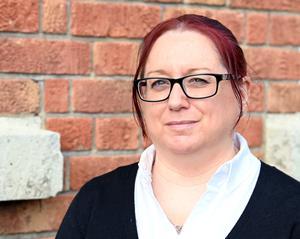
Keely Brewer
Digital / Tech Executive
Keely joined the ROA in 2004 after working for five years as a PA in the charity sector - two years at a charity which specialised in securing young people training and employment within the Creative industry, and three years at a charity which helped develop family policy within Government. She had previously studied English Literature and Business Studies at Roehampton University, before becoming an NVQ Assessor in Computer Skills and Customer Service.
Interested in racing from a young age, during her studies she spent weekends helping out at Terry Mills’ Epsom yard. Since joining the ROA she has become involved in racehorse ownership, taking part shares, and administering the partnerships, for two fillies with contrasting fortunes – Oaks runner Champagnelifestyle, and the mercurial Rich And Reckless.
Favourite horses: Dancing Brave, Champagnelifestyle, Rich And Reckless, Cornus, Norton and Monkerhostin.
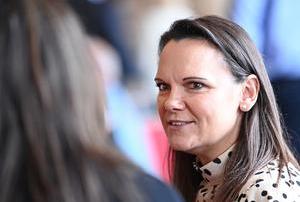
Kate Freeman
Head of Ownership
Kate has been with the ROA since October 2024, joining from the BHA where she worked for 3 years within the Strategy and Change team. Her professional background prior to joining the racing industry was spent working for two large multinationals, joining Mars Inc on their graduate scheme from university and then moving to Coca-Cola and remaining there for 21 years, gaining a breadth of experience across a variety of sales, commercial and marketing roles. Kate is passionate about horses and horseracing, is a keen rider and has some experience of working in a small National Hunt yard, albeit many years ago!
Favourite horses: Many Clouds, Thistlecrack, Lil Rockerfeller & Sire De Grugy.
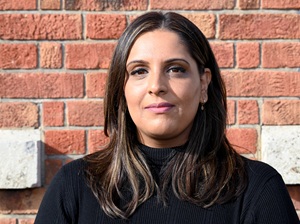
Davina Grewal
VAT Solution – VAT Senior Executive
Davina joined the ROA VAT Solution in June 2021, bringing 12 years of finance and business experience to the VAT solution.
After graduating from City University with a postgraduate diploma in law, Davina lived in Arusha, Tanzania for 7 years. During her time in Arusha she worked in the finance department of Simba Trucking Co Ltd, a road haulage company with a fleet of over 300 vehicles, hauling goods all over East Africa for multinational corporations. After gaining an insight into trading in East Africa, she formed Blacksheep Media, overseeing the day-to-day operations and finances.
In 2017, Davina returned to the UK with her family and now lives in South Oxfordshire.
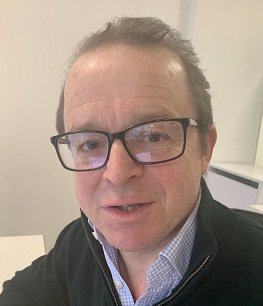
Steve Hatcher
Head of Finance
Steve joined ROA in late 2019 having previously worked for Countryside Alliance as Finance Director and latterly as Deputy Chief Executive.
Prior to joining ROA he worked for AEAT Plc and Serco Plc in a variety of finance roles having qualified as a Chartered Accountant with Deloitte some years previously. He has had a keen interest in racing and the racing industry for many years. Steve has owned small shares in some very modest performers both on the Flat and under National Hunt rules.
Favourite horses: include Dancing Brave, Inchcailloch, Best Mate, Pete the Postman [!] Frankel, and Many Clouds.
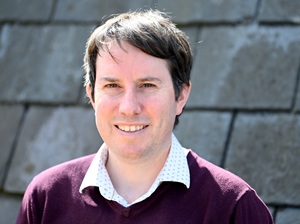
Glen Hillsmith
VAT Solution – VAT Senior Executive
Glen joined the ROA VAT Solution in July 2021. He is steeped in racing VAT having worked for the previous seven years at both the BHA Sponsorship and VAT desk, and Weatherbys VAT Services. Prior to this he lived and taught English in Budapest, and had an eight-year stint at Barclays International Trade Services.
His grandparents took him on first trip to a racecourse at the age of six, to their nearest jumps course, Worcester, and he has been hooked ever since.
Favourite horses: Big Buck’s, Inglis Drever, Sprinter Sacre

Sarah Holton
Ownership Executive
Sarah first was interested in racing aged 12, after watching her mum win money on Commander In Chief’s win in the Derby - twelve months later, after having backed every winner on the card, she was hooked for life!
A BSc (Hons) degree in Equine Science from Imperial College preceded two years work at Satellite Information Services (SIS) on the ATR Teletext service. After a year at Ladbrokes, getting the Ladbrokes Xtra service off the ground Sarah returned to SIS as a Data Co-Ordinator for a further five years. The opportunity to work for the ROA proved too good an opportunity to miss though, and Sarah has been a member of the staff since November 2011.
Favourite horses: The Minstrel (despite being before her time), Flake, Whitbarrow, and Kauto Star.

Rebecca Strange
VAT Solutions Administrator
Rebecca first joined the ROA in 2017 as subscriptions secretary having completed a BSc (Hons) degree in Equine Management at the Royal Agricultural University. For the past few years, she has worked with the ROA as a trainer liaison alongside O&T work at numerous racecourses, and now has moved over to the VAT team as a part-time VAT Solutions Administrator.
First interested in horse racing from a young age riding out at local racing yards, Rebecca now has her own retired racehorses who, along with various rescued animals, keep her busy outside of work!

Roxie Walmsley
Financial Controller
Roxie joined the ROA in October 2023, bringing a knack for seamless organisation and a passion for efficiency to the team. With over a decade of experience as a senior Executive Assistant, she has a blend of professionalism, adaptability and a keen eye for detail. Throughout her career, she has earned a reputation for integrity and the highest standards of confidentiality.
Roxie is a relative newcomer to the joys and intricacies of horse racing but managed to back a 4/1 winner with her first ever bet on her first visit to a racecourse after joining the ROA.
Owner Relations

Owner Relations is a new function launched in 2025, with the primary objective of improving the retention of owners within British racing.
It is a cross-industry initiative looking holistically at the owner experience.
Owners are crucial, investing circa £500 million annually in training and racing fees alone – when you factor in the cost of buying a horse, the total value is far greater. Figures show that year after year, our total net owner number is declining – more owners are leaving than joining – especially true for those with sole ownerships. So how do we at least start to address this issue? To have even the smallest impact or influence here, we need to understand why it is happening.
Therefore, our vision is that anyone investing in ownership within British Racing is recognised by the industry, and key service providers are supported in retaining owners and their horses in British Racing.
All owners should feel like valued investors because like any customer, they have choices about where to spend their money. We need to understand why owners leave; at present we simply don’t know all the reasons and that is why a key objective for the new team, at least in the short-term, is to keep owners in racing.
Providing dedicated resources in this area was a key recommendation of a cross-industry working group, tasked with looking holistically at the owner experience. The future vision for the new team is that anyone investing in ownership is known to the industry and recognised for their investment, whether that’s through sole, shared or a combination of ownerships. The Owner Relations work will be led by the ROA, but the team will be advocating on behalf of all owners within British racing.
If you would like to speak to one of the Owner Relations team please contact Kate Freeman, Head of Owner Relations, at [email protected].
MEET THE TEAM

Kate Freeman
Head of Ownership
Kate has been with the ROA since October 2024, joining from the BHA where she worked for 3 years within the Strategy and Change team. Her professional background prior to joining the racing industry was spent working for two large multinationals, joining Mars Inc on their graduate scheme from university and then moving to Coca-Cola and remaining there for 21 years, gaining a breadth of experience across a variety of sales, commercial and marketing roles. Kate is passionate about horses and horseracing, is a keen rider and has some experience of working in a small National Hunt yard, albeit many years ago!
Favourite horses: Many Clouds, Thistlecrack, Lil Rockerfeller & Sire De Grugy.
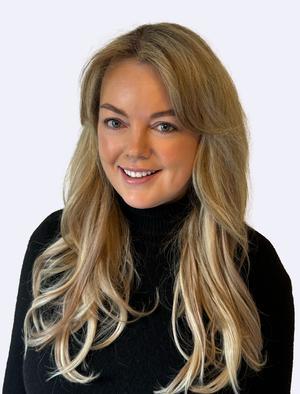
Camilla Perrett
Head of Client Relations & Marketing
Camilla has been with Great British Racing International since 2019, having previously worked for Sirecam, Sportsguide and Amanda Perrett Racing.
Camilla is responsible for ensuring the team deliver GBRI’s strategy, with a focus on client relations, events and marketing.
Camilla now brings her wealth of client-facing experience to the Owner Relations team.
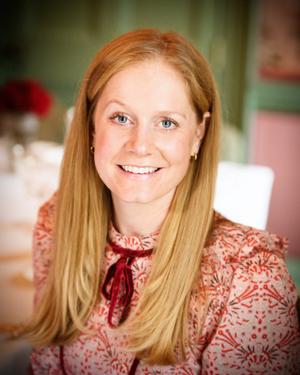
Amanda Prior
Client Relations Manager
Amanda has been with Great British Racing International since 2015, having joined the company upon graduation of the Godolphin Flying Start.
Amanda's focus is on client relations and events, working with luxury brands to bring one-of-a-kind experiences to new and existing owners in Britain.

Rory Ramsamy
Senior Projects Executive
Rory joined Great British Racing International (GBRI) after graduating from his Masters degree and has been with the organisation since 2022.
He first visited a racecourse aged 3 and immediately fell in love with the sport. His time off work is spent watching races globally or on a racecourse near London, where he is based.
He focuses on various marketing projects, digital output and research for GBRI & Owner Relations.
